
Eadweard Muybridge was an English photographer known for his pioneering work in photographic studies of motion, and early work in motion-picture projection.

John Lawrence Ashbery was an American poet and art critic.
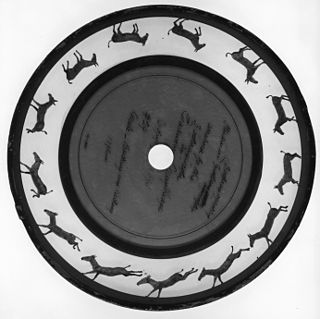
The zoopraxiscope is an early device for displaying moving images and is considered an important predecessor of the movie projector. It was conceived by photographic pioneer Eadweard Muybridge in 1879. Muybridge used the projector in his public lectures from 1880 to 1895. The projector used 16" glass disks onto which Muybridge had an unidentified artist paint the sequences as silhouettes. This technique eliminated the backgrounds and enabled the creation of fanciful combinations and additional imaginary elements. Only one disk used photographic images, of a horse skeleton posed in different positions. A later series of 12″ discs, made in 1892–1894, used outlines drawn by Erwin F. Faber that were printed onto the discs photographically, then colored by hand. These colored discs were probably never used in Muybridge's lectures. All images of the known 71 disks, including those of the photographic disk, were rendered in elongated form to compensate the distortion of the projection. The projector was related to other projecting phenakistiscopes and used some slotted metal shutter discs that were interchangeable for different picture disks or different effects on the screen. The machine was hand-cranked.
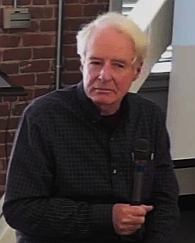
Adam Hochschild is an American author, journalist, historian and lecturer. His best-known works include King Leopold's Ghost (1998), To End All Wars: A Story of Loyalty and Rebellion, 1914–1918 (2011), Bury the Chains (2005), The Mirror at Midnight (1990), The Unquiet Ghost (1994), and Spain in Our Hearts (2016).
John W. Dower is an American author and historian. His 1999 book Embracing Defeat: Japan in the Wake of World War II won the U.S. National Book Award for Nonfiction, the Pulitzer Prize for General Nonfiction, the Bancroft Prize, the Los Angeles Times Book Prize, the Mark Lynton History Prize, and the John K. Fairbank Prize of the American Historical Association.
Sara "Sally" Lynn Hacker was a feminist sociologist who investigated cultures surrounding technology. She was interested in how changes in technology affected gender stratification.
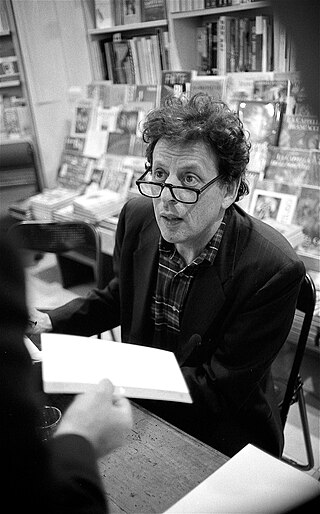
The Photographer is a three-part mixed media performance accompanied by music by composer Philip Glass. The libretto is based on the life and homicide trial of 19th-century English photographer Eadweard Muybridge. Commissioned by the Holland Festival, the opera was first performed in 1982 at the Royal Palace of Amsterdam.

The Society for the History of Technology (SHOT) is the primary professional society for historians of technology. SHOT was founded in 1958 in the United States, and it has since become an international society with members "from some thirty-five countries throughout the Americas, Europe, Asia, and Africa." SHOT owes its existence largely to the efforts of Professor Melvin Kranzberg (1917–1995) and an active network of engineering educators. SHOT co-founders include John B. Rae, Carl W. Condit, Thomas P. Hughes, and Eugene S. Ferguson.

Thom Andersen is an American filmmaker, film critic, and teacher best known for his works of experimental film, including his 1975 film Eadweard Muybridge, Zoopraxographer and the 2003 essay film Los Angeles Plays Itself.

Rebecca Solnit is an American writer and activist. She has written on a variety of subjects, including feminism, the environment, politics, place, and art. Solnit is the author of seventeen books, including River of Shadows, which won the 2004 National Book Critics Circle Award in Criticism; A Paradise Built in Hell, from 2009, which charts community responses to disaster; The Faraway Nearby, a wide-ranging memoir published in 2013; and Men Explain Things to Me, a collection of essays on feminism and women's writing first published in 2014.

The Horse in Motion is a series of cabinet cards by Eadweard Muybridge, including six cards that each show a sequential series of six to twelve "automatic electro-photographs" depicting the movement of a horse. Muybridge shot the photographs in June 1878. An additional card reprinted the single image of the horse "Occident" trotting at high speed, which had previously been published by Muybridge in 1877.

Kingston Museum is an accredited museum in Kingston upon Thames, southwest London, England. The Scottish-American philanthropist Andrew Carnegie funded the building of the museum, which adjoins Kingston Library.

Mansplaining is a pejorative term meaning "(for a man) to comment on or explain something, to a woman, in a condescending, overconfident, and often inaccurate or oversimplified manner".
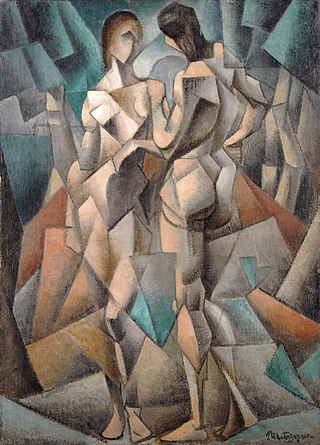
Two Nudes is an early Cubist painting by the French artist and theorist Jean Metzinger. The work was exhibited at the first Cubist manifestation, in Room 41 of the 1911 Salon des Indépendants, Paris. At this exhibition the Cubist movement was effectively launched before the general public by five artists: Metzinger, Gleizes, Le Fauconnier, Delaunay and Léger. This was the first exhibition during which artists, writers, critics and the public at large encountered and spoke about Cubism. The result of the group show is a succès de scandale.

Laura J. Snyder is an American historian, philosopher, and writer. She is a Fulbright Scholar, is a Life Member of Clare Hall, Cambridge, was the first Leon Levy/Alfred P. Sloan fellow at The Leon Levy Center for Biography at The Graduate Center, CUNY, and is the recipient of an NEH Public Scholars grant. She writes narrative-driven non-fiction books including, most recently, Eye of the Beholder: Johannes Vermeer, Antoni van Leeuwenhoek, and the Reinvention of Seeing, which won the Society for the History of Technology's 2016 Sally Hacker Prize. In 2019, Snyder signed a contract with A. A. Knopf to author a biography of Oliver Sacks, based on exclusive access to the Sacks archive. Snyder also writes for The Wall Street Journal. She lives in New York City, where she was a philosophy professor at St. John's University for twenty-one years.
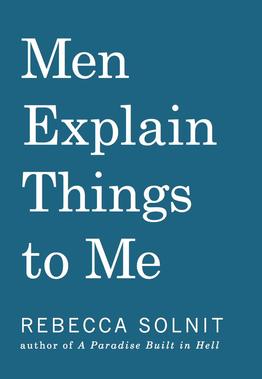
Men Explain Things to Me is a 2014 essay collection by the American writer Rebecca Solnit, published by Haymarket Books. The book originally contained seven essays, the main essay of which was cited in The New Republic as the piece that "launched the term mansplaining". But Solnit herself did not use the word in the original essay and has since rejected the term. The September 2015 expanded edition of the book included two new essays: "Cassandra Among the Creeps" and "#YesAllWomen: Feminists Rewrite the Story."

Animal Locomotion: An Electro-photographic Investigation of Consecutive Phases of Animal Movements is a series of scientific photographs by Eadweard Muybridge made in 1884 and 1885 at the University of Pennsylvania, to study motion in animals. Published in July 9, 1887, the chronophotographic series comprised 781 collotype plates, each containing up to 36 pictures of the different phases of a specific motion of one subject.
Events in 1885 in animation.
Events in 1884 in animation.
Events in 1881 in animation.















